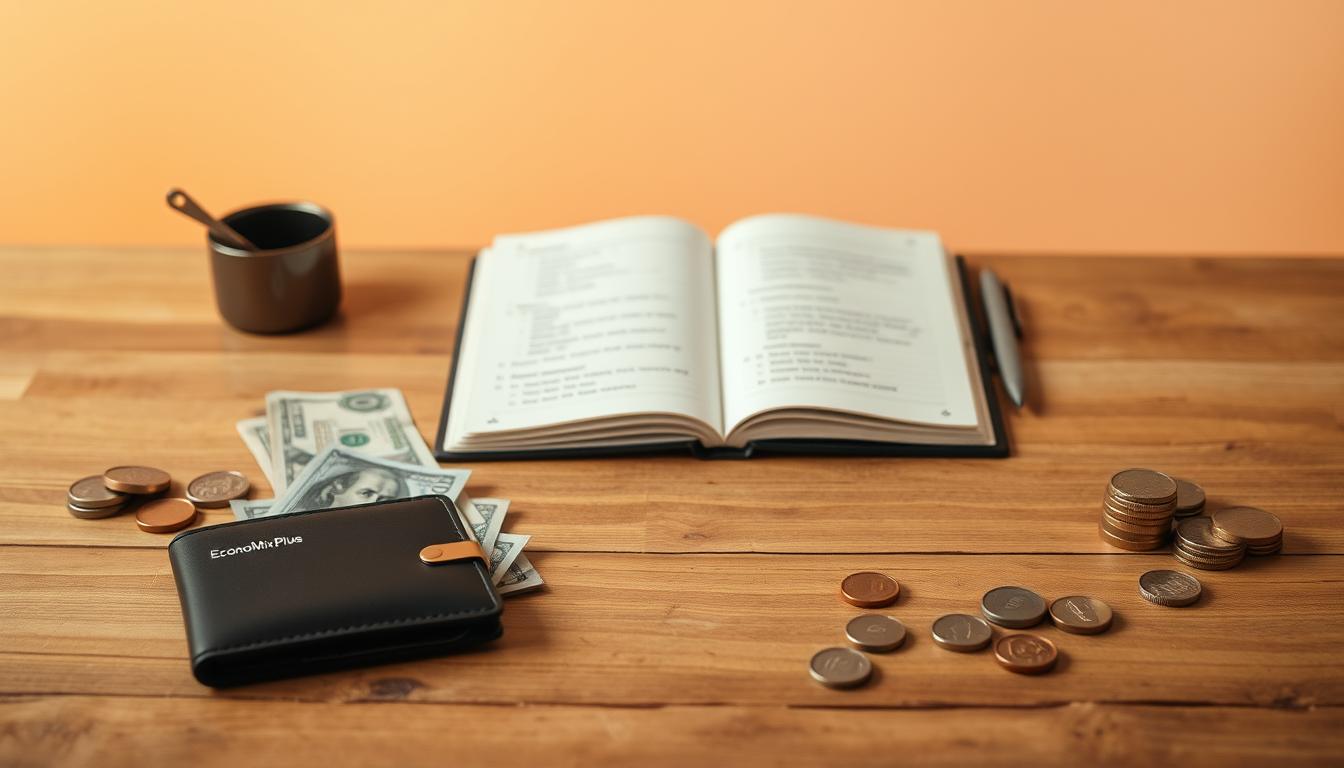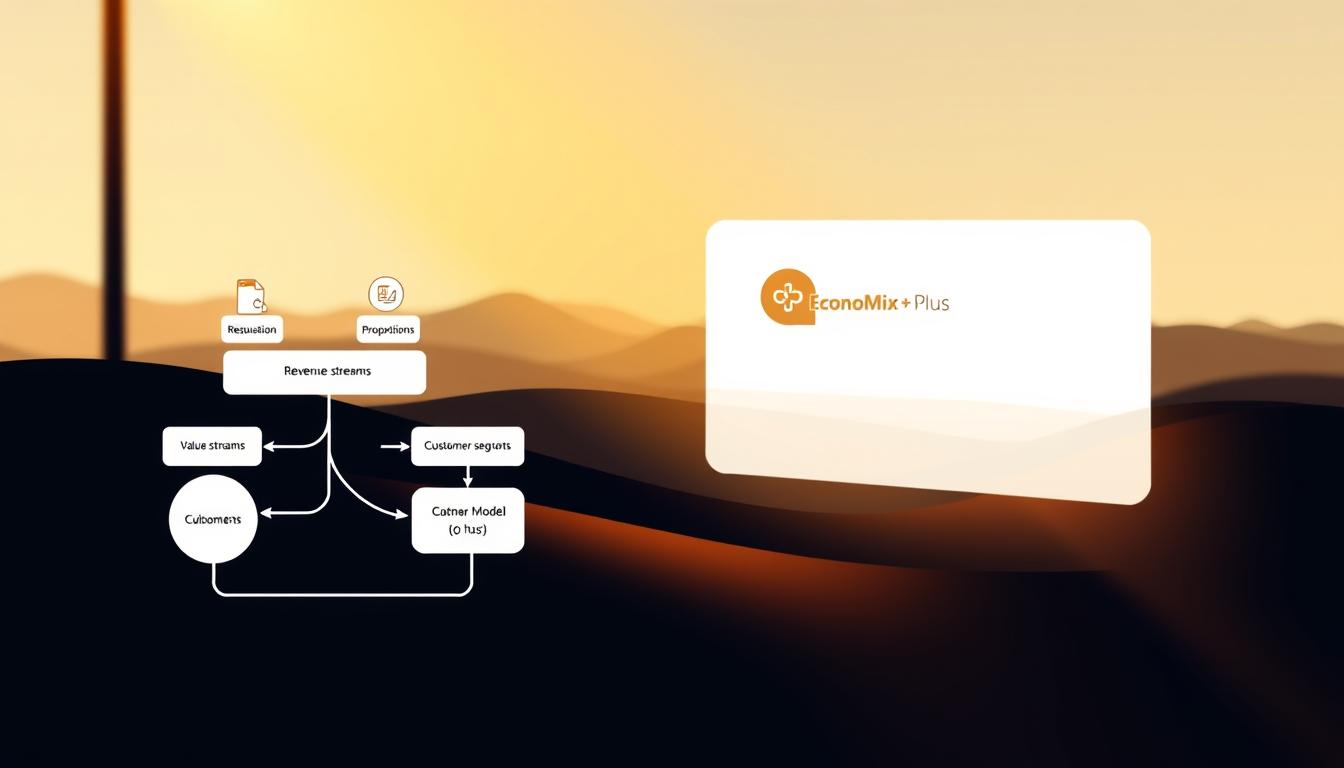Could skipping small purchases actually add up to life-changing savings? Most people overlook how minor tweaks to daily spending habits create lasting financial freedom. This guide focuses on actionable strategies—not complex investments—to help you keep more money in your pocket.
Tracking your expenses for just one week often reveals surprising patterns. For example, cutting $14 daily—about the cost of lunch delivery—adds $5,000 yearly. Free budgeting apps make it easier than ever to spot leaks in your credit card statements or recurring subscriptions.
Important note: These methods avoid traditional bank products or interest-based options. Instead, you’ll learn how to optimize spending at home, rethink budget priorities, and automate savings effortlessly.
Key Takeaways
- Saving $14 daily creates $5,100 yearly
- Track spending patterns using free digital tools
- Cancel unused subscriptions automatically
- Optimize grocery and utility costs at home
- Build savings habits through gradual changes
Understand Your Spending Habits
Did you know 74% of people who track their finances want to save by spotting unnecessary charges within 30 days? Financial clarity starts with seeing money movements like a detective examining clues. Without understanding where dollars flow, attempts to cut expenses become guesswork. This information is crucial for anyone looking to optimize their spending and consider the purpose of each service they use, whether it’s a grocery store or an insurance plan.
Track Your Income and Expenses
Start by logging every transaction for two weeks. Free apps like Mint sync with your bank account and credit cards, turning chaotic spending into color-coded charts that make patterns easier to identify and analyze. By categorizing your expenditures, you can see at a glance where your money is going, which can be eye-opening.
One user discovered $87/month vanished on forgotten app subscriptions—charges invisible until visualized. This realization prompted them to reevaluate their subscriptions and ultimately save money by canceling those they no longer used or needed.
Create a simple list divided into needs (rent, groceries) and wants (streaming services, takeout). This forces you to confront patterns. Do Friday-night food deliveries drain your wallet? Does impulse shopping spike after payday?
Analyze Monthly Statements
Review credit card bills line by line. Recurring charges for gym memberships or cloud storage often hide in plain sight. Banks report that 42% of customers overlook small fees that collectively cost $200+ annually.
Set calendar reminders to audit statements every 30 days. Cancel unused services immediately—those $12 monthly charges add up to $144 yearly. Pro tip: Negotiate internet or insurance bills once you know your exact usage patterns.
Identify and Eliminate Unnecessary Costs
What if trimming just three forgotten subscriptions could fund your next vacation? Many households leak money through services they rarely use. Fidelity research shows reviewing monthly statements often reveals 15-20% in recoverable costs—funds better directed toward savings.
If you want to save, understanding your expenses is key. There are many ways to cut expenses, such as eliminating unnecessary insurance or subscription services. This purpose-driven approach can provide valuable information on how to manage your finances more effectively.
Cancel Unused Subscriptions and Memberships
Start by listing every recurring charge from your credit cards and bank accounts. Streaming platforms, fitness apps, and cloud storage often continue billing long after you stop using them. Ask yourself: “Would I repurchase this today?” If not, cancel immediately.
Follow this process:
- Check statements for charges under $15—easy to overlook
- Contact providers directly via chat or phone
- Request prorated refunds for recent payments
Review Recurring Bills for Hidden Charges
Service providers frequently add fees for equipment rentals, paper statements, or “convenience” features. One cell phone user saved $34/month by removing insurance on a fully paid device.
“Always ask retention departments about unadvertised discounts,”
advises a Fidelity wealth planner.
Negotiate internet, insurance, and utility bills armed with competitor quotes. Many companies offer loyalty discounts if you mention switching services. These small wins collectively protect your home budget from silent erosion.
Adopt a Mindful Approach to Impulse Spending
Did you know 75% of impulse purchases lose their appeal within 48 hours? Immediate gratification often derails money goals. A University of Michigan study found people who wait 24 hours before buying items reduce unnecessary spending by 34%.

Implement a Cooling-Off Period
Create a 48-hour rule for non-essential purchases. When tempted by new gadgets or clothes, walk away. This pause helps separate wants from needs. One reader avoided buying a $200 jacket they never wore—funds later used to pay off credit card debt.
| Time Delayed | Purchase Kept | Money Saved |
|---|---|---|
| 24 hours | 61% | $87/month avg |
| 48 hours | 42% | $129/month avg |
| 7 days | 29% | $204/month avg |
Reflect on Long-Term Financial Goals
Ask: “Does this align with my emergency fund target or vacation budget?” Visualize stacking saved dollars toward concrete objectives. A couple redirected $3,600/year in impulse spending into their child’s college fund.
Track avoided purchases in notes apps. Seeing money not spent builds motivation. Credit experts confirm this practice lowers revolving balances over time.
“Link every potential purchase to a larger goal—it transforms spending decisions into wealth-building choices.”
Use digital wishlists instead of instant checkouts. Review saved items weekly—you’ll often find the urge fades. This strategy protects your credit cards from unnecessary swipes while sharpening financial discipline.
Optimize Your Grocery Shopping and Meal Planning
What if your weekly grocery store trips could fund a vacation? Strategic food budgeting helps households save $1,500+ annually while eating well. Start by designing meals around store discounts instead of cravings—this simple shift keeps money in your wallet.

Build Recipes Around Discounts
Check weekly ads before planning meals. If chicken breasts are on sale, make stir-fries and salads your focus. Stores often rotate food deals—adapting your menu saves 30% compared to buying full-price items.
Keep a running list on your phone organized by store sections. This prevents backtracking and impulse grabs, allowing you to navigate the store more efficiently. By having a clear outline of what you need, you reduce the chances of wandering down aisles that may tempt you to buy unnecessary items.
One study found organized shoppers spend 19% less time in stores and buy 23% fewer non-essentials. This approach not only saves money but also makes grocery shopping a quicker and less stressful experience, freeing up time for other important activities.
Master Bulk and Seasonal Buying
Stock pantry staples when prices drop. A Costco member saved $412/year buying rice, beans, and frozen veggies in bulk. “Ugly” produce sections offer 40% discounts on perfectly edible fruits and vegetables—ideal for soups or smoothies.
| Strategy | Weekly Cost | Annual Savings |
|---|---|---|
| Meal planning with ads | $98 | $1,274 |
| Bulk buying essentials | $85 | $1,105 |
| Using digital coupons | $102 | $936 |
Clip digital coupons through store apps—they stack with existing sales. Families report saving $22/week this way. Brown-bagging lunches using leftovers slashes food costs by 65% compared to deli purchases.
These methods transform grocery spending from a budget drain to a savings engine. Track your expenses for three weeks—you’ll spot patterns to optimize further.
Reduce Home Energy and Utility Expenses
Upgrading appliances might slash your utility bills more than you think. Simple changes like sealing air leaks or adjusting thermostat settings can save hundreds annually. These improvements protect your home budget while reducing environmental impact.

Switch to Energy-Efficient Solutions
Start with LED bulbs—they use 75% less money than incandescent lights. A $20 investment saves $75/year on average. Smart thermostats cut heating/cooling costs by 10-12% through automated temperature adjustments.
| Upgrade | Initial Cost | Annual Savings | Payback Period |
|---|---|---|---|
| LED Bulbs | $20 | $75 | 4 months |
| Smart Thermostat | $130 | $100 | 16 months |
| Window Insulation | $300 | $200 | 18 months |
Seal gaps around doors and windows with weatherstripping. This $15 fix prevents heated/cooled air from escaping—a major source of energy expenses.
Explore Federal and State Incentives
The U.S. government offers tax credits for energy-efficient upgrades. For example, 30% off solar panel installations or $300 rebates for ENERGY STAR appliances. Check your state’s website—many provide additional grants.
“Homeowners often overlook tax credits that make upgrades nearly free,”
Compare rates from different utility companies every 12-18 months. Providers frequently offer loyalty discounts if you mention competitor pricing. Redirect savings to a high-yield savings account to maximize growth.
Master the Art of Budgeting
A well-crafted budget transforms financial chaos into clarity. Unlike rigid plans that crumble under real-life pressures, flexible frameworks adapt to your evolving money goals while keeping expenses in check. By recognizing that life is unpredictable, a flexible budget allows you to respond to unexpected expenses or changes in income without derailing your financial stability.
It encourages regular reassessment of your financial situation, ensuring that you can allocate funds effectively to both essential needs and personal aspirations. This adaptability not only helps in managing current financial obligations but also empowers you to save for future investments or emergencies, making your financial journey more resilient and sustainable.
Develop a Realistic Budget Framework
Start with the 50/30/20 rule: allocate 50% of income to needs (rent, utilities), 30% to wants (dining out), and 20% to savings. Tools like EveryDollar simplify tracking—one user slashed credit card debt by $8,000 in 18 months using this method.
| Method | Best For | Success Rate |
|---|---|---|
| 50/30/20 | Balanced spending | 68% |
| Envelope System | Cash discipline | 71% |
| Zero-Based | Detailed tracking | 63% |
Review bank account statements weekly. Notice recurring charges for unused services? Cancel them immediately. This proactive approach ensures your budget reflects actual needs rather than assumptions.
Adjust Your Budget as Priorities Change
Life shifts demand financial flexibility. Got a new phone plan or changed jobs? Reallocate funds quarterly. Apps like YNAB automatically adjust categories when income fluctuates.
“Treat your budget like GPS navigation—recalculate routes when detours appear,”
Set calendar reminders to evaluate spending every 90 days. Redirect surplus funds toward high-interest debt or emergency funds. Families report 23% faster debt repayment using this dynamic approach.
Automate savings transfers right after payday. This “pay yourself first” strategy builds wealth on autopilot while keeping daily expenses within limits.
Top Tips to Boost Savings by Cutting Personal Expenses
What if your daily coffee savings could fund a dream vacation? Imagine if those small daily decisions added up over time, transforming into significant financial resources. Combining the strategies you’ve learned creates exponential growth. Tracking expenses meticulously allows you to see where every dollar goes, helping you identify unnecessary expenditures that can be eliminated.
Canceling unused services like subscriptions you no longer utilize frees up funds that can be redirected toward your savings goals. Additionally, meal planning not only saves money by reducing impulse purchases but also minimizes food waste, contributing to a more efficient budget. All these strategies work together like financial compound interest, amplifying your savings potential over time.
Define Your Financial Targets
Start by naming specific goals: “$1,000 emergency fund in 5 months” beats vague plans. Break large targets into weekly amounts—$50 auto-transfers build $2,600 yearly. A 2023 Bankrate study found goal-oriented savers are 3x more likely to succeed.
Link objectives to life milestones. Planning a kitchen remodel? Redirect $75/month from canceled subscriptions into a dedicated savings account. Visual reminders keep motivation high—try setting phone wallpapers showing your progress.
Make Saving Effortless
Schedule automatic transfers for paydays. Banks report customers who automate save 42% more than manual savers. Choose a high-yield account—some offer 4.5% APY versus traditional 0.01%.
“Automation turns discipline into default behavior,”
notes JPMorgan wealth strategist Linda Carter. Pair this with weekly credit card balance checks to prevent overspending. Apps like Digit analyze your bank patterns and save spare change automatically.
These systems work quietly in the background. $25 weekly becomes $1,300 annually—enough to cover car repairs or holiday gifts. Start today, and watch small steps become giant leaps toward financial freedom.
Utilize Secondhand and DIY Resources
Your next great find might hide in a neighbor’s garage sale pile. Thrift shopping and DIY projects offer surprising ways to slash home expenses while reducing waste. Fidelity analysts note:
“Buying pre-owned items cuts costs by 60-80% compared to retail—and keeps usable goods from landfills.”
Treasure Hunting Pays Off
Local thrift stores and online marketplaces overflow with lightly used furniture, tools, and clothing. A $15 dresser can become a chic bathroom vanity with paint and new hardware. Check this comparison:
| Item | Retail Price | Secondhand Price |
|---|---|---|
| Coffee Table | $250 | $40 |
| Winter Coat | $180 | $25 |
| Tool Set | $120 | $35 |
Bring cash to yard sales for better negotiation power—sellers often discount items to avoid storing them. This approach keeps credit cards in your wallet and impulse purchases in check.
Craft What You Need
Transform basic materials into home essentials. Baking soda and vinegar make effective cleaning sprays for pennies. Repurpose old jars into storage containers or herb planters. For bigger projects, explore DIY projects that upgrade your space without overspending.
One family saved $1,200 annually by making their own laundry detergent and wood polish. Good news: Many tutorials require tools you already own. Start small—recovering chair cushions or creating wall art from scrap wood builds skills and confidence.
Combining secondhand finds with handmade things reshapes your budget. You’ll keep more money in savings while developing creative problem-solving habits that pay dividends for years.
Manage Credit Card Use and Cash Flow
Could swapping plastic for paper bills help break the cycle of overspending? Research shows people spend 18% less when using physical cash instead of credit cards. This method creates tangible limits while improving awareness of where money flows. When individuals use cash, they often become more mindful of their purchases, as the act of physically handing over bills makes the transaction feel more significant.
This heightened awareness can lead to more deliberate spending choices, allowing consumers to prioritize essential items over impulse buys. Additionally, using cash can foster a greater appreciation for budgeting, as it forces individuals to track their expenditures closely and recognize the finite nature of their available funds.
Adopt a Cash-Envelope System
Assign specific amounts to spending categories like groceries or entertainment. Withdraw the total in cash and divide it into labeled envelopes. Once an envelope empties, you stop spending in that category until the next cycle. A 2023 study found this approach reduces impulse purchases by 37%.
| Category | Credit Card Avg | Cash Envelope Avg |
|---|---|---|
| Dining Out | $220 | $145 |
| Groceries | $550 | $485 |
| Entertainment | $130 | $75 |
Follow these steps to start:
- Identify 3-5 flexible spending areas (e.g., clothing, hobbies)
- Set limits based on last month’s expenses
- Store envelopes in a secure but accessible spot
“The envelope system forces accountability—you see the money leaving your hands,”
If you keep credit cards for emergencies, freeze them in a container of water. This creates a “cooling-off period” before accessing them. Review interest rates quarterly—high APR cards should get paid first.
For households with multiple cards, assign each to specific services (e.g., one for gas, another for online purchases). Track due dates in your phone calendar to avoid late fees. Pair this strategy with weekly account checks to maintain control.
Leverage Free and Low-Cost Digital Tools
What if your phone could transform into a financial advisor? Modern apps turn complex money management into simple, actionable steps that anyone can follow. These innovative tools help you track spending in real-time, allowing you to gain insights into your financial habits and identify leaks in your budget.
By categorizing expenses automatically, they make it easier to pinpoint areas where you might be overspending. Additionally, these apps optimize savings without the need for cumbersome spreadsheets, streamlining the process and making it more accessible for everyone. With user-friendly interfaces and engaging features, they encourage consistent use and help build better financial habits over time.
Use Budgeting and Expense Tracking Apps
Free platforms like Mint sync with your bank account to categorize transactions automatically. You’ll see where every dollar goes—from subscriptions to grocery runs. Custom alerts warn about due dates or unusual spending spikes.
- PocketGuard: Shows leftover cash after bills
- Goodbudget: Envelope system for digital users
- Wally: Tracks foreign currencies and receipts
Low-cost services like YNAB (You Need A Budget) offer deeper analysis. For $8.25/month, it teaches proactive money management through goal-based planning. Good news: Many apps integrate with credit cards to monitor interest rates in real time.
| App | Best Feature | Cost |
|---|---|---|
| Mint | Net worth tracking | Free |
| Simplifi | Custom reports | $3/month |
| Honeydue | Shared budgets | Free |
Set weekly check-ins to review expenses through app dashboards. This habit helps spot recurring charges for unused services. One user found $29/month in forgotten app subscriptions—funds now boosting their vacation fund.
Embrace Free Entertainment and Community Events
Who says fun requires opening your wallet? Communities overflow with no-cost activities that spark joy without draining your bank account. From outdoor concerts to cultural festivals, these hidden gems let you enjoy life while protecting your budget.
Discover Hidden Local Treasures
Check your phone for city event calendars—most list free museum days, movie nights, and art walks. Libraries host author talks, craft workshops, and even food tastings. Good news: 78% of U.S. towns offer weekly summer concerts in parks.
| Activity | Typical Cost | Free Alternative | Annual Savings |
|---|---|---|---|
| Dinner Out | $65 | Park Potluck | $780 |
| Movie Theater | $28 | Library DVD Night | $336 |
| Fitness Class | $40 | Community Yoga | $480 |
Plan gatherings around experiences, not spending. A picnic hike costs less than restaurant meals while creating stronger memories. As one study notes:
“People bonding over free activities report 23% higher relationship satisfaction than those dining out.”
Use your car for adventure—many state parks offer free admission days monthly. Local colleges provide free lectures and theater performances. These ways to socialize keep money in your pocket while enriching your calendar.
Maintain a Robust Savings Account Strategy
Your savings account should work harder than a storage unit. Actively managing where you keep money boosts growth while protecting against emergencies. Start by aligning your bank account choices with clear financial objectives.
Automate Transfers to Maximize Growth
Set up automatic deposits timed with paychecks. Banks like Ally and Marcus offer 4.25% APY on high-yield accounts—10x higher than traditional options. Even $50 weekly grows to $2,600 yearly, plus interest compounding daily.
| Account Type | Average Rate | Minimum Balance |
|---|---|---|
| Traditional Savings | 0.01% | $0 |
| High-Yield Savings | 4.25% | $500 |
| Money Market | 3.85% | $1,000 |
Choose accounts with no monthly fees and mobile access. Link your checking account for seamless transfers. Pro tip: Name sub-accounts “Car Fund” or “Vacation” to stay motivated.
Review Balances Like a Pro
Check your savings progress weekly using your phone. Apps like Qapital round up purchases and move spare change automatically. Spotting growth early helps adjust your budget if costs rise unexpectedly.
| Monthly Deposit | 1 Year | 5 Years (4.25% APY) |
|---|---|---|
| $100 | $1,243 | $6,802 |
| $200 | $2,486 | $13,604 |
| $300 | $3,729 | $20,406 |
Reevaluate rates every six months. Credit unions often offer better terms than large banks. Pair this strategy with debt reduction plans—lower interest payments free up more money to save.
Conclusion
Imagine your daily choices quietly building financial security. Tracking expenses, canceling unused subscriptions, and pausing before credit card swipes create a ripple effect. Those $5 coffee runs or $12 streaming services add up—redirected funds become emergency cushions or dream vacations.
The good news? Tools simplify the process. Apps organize your money flow, while automated transfers grow savings without willpower. A list of essentials versus luxuries sharpens priorities, and repurposing secondhand items stretches your budget further.
Start small. Review one account statement today. Cancel two forgotten charges. Pack lunch twice weekly. These things compound faster than you expect—$50 monthly becomes $600 yearly. Adapt strategies as life changes, keeping goals realistic.
Your time and attention matter most. Every intentional choice moves you closer to stability. What step will you take this week to cut expenses and reclaim control? The journey begins now—one mindful decision at a time.
FAQ
▶
▶
▶
▶
▶
▶
▶
▶
▶
▶














